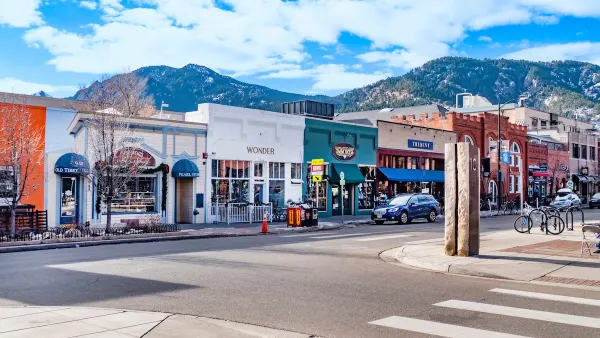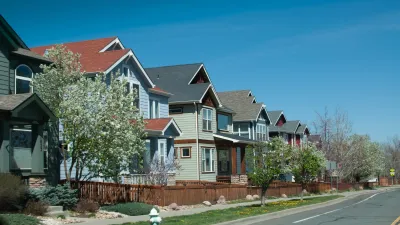A new report out from the Census Bureau paints a comprehensive picture of commuting in the United States. Average commute times remain steady, but the most significant change may be in the percentage of people working from home at least once a week.
Brad Plumer discusses the new findings on the lengths, modes, and geography of America's commuting patterns contained in a report just released by the Census Bureau. "About 1.7 million Americans have 'extreme' commutes that take 90 minutes or more each way. About 2.2 million workers have 'long-distance' commutes that span at least 50 miles in each direction."
"The bad news? Researchers have amassed evidence that miserably long commutes are associated with all manner of bad outcomes, from increased odds of divorce to neck and back problems to less sleep to sheer unhappiness."
"The better news? The Census found that American commutes aren’t any more grueling, on average, then they were back in 2000. After a sharp rise during the 1990s, the portion of 'extreme' commuters has stayed roughly constant over the years, and average commute times haven’t really budged in the last decade," notes Plumer.
The most significant change outlined in the report may be the 4.2 million person (35%) increase in telecommuting over the past decade. The Census Bureau has released a fascinating infographic that further explains the demographic profile of those working from home. Of note, Boulder, Colorado, is the city with the highest percentage of home-based workers in the U.S. (10.9%).
FULL STORY: Commuting in the U.S. is hellish — but at least it’s not getting worse

Planetizen Federal Action Tracker
A weekly monitor of how Trump’s orders and actions are impacting planners and planning in America.

Maui's Vacation Rental Debate Turns Ugly
Verbal attacks, misinformation campaigns and fistfights plague a high-stakes debate to convert thousands of vacation rentals into long-term housing.

Restaurant Patios Were a Pandemic Win — Why Were They so Hard to Keep?
Social distancing requirements and changes in travel patterns prompted cities to pilot new uses for street and sidewalk space. Then it got complicated.

In California Battle of Housing vs. Environment, Housing Just Won
A new state law significantly limits the power of CEQA, an environmental review law that served as a powerful tool for blocking new development.

Boulder Eliminates Parking Minimums Citywide
Officials estimate the cost of building a single underground parking space at up to $100,000.

Orange County, Florida Adopts Largest US “Sprawl Repair” Code
The ‘Orange Code’ seeks to rectify decades of sprawl-inducing, car-oriented development.
Urban Design for Planners 1: Software Tools
This six-course series explores essential urban design concepts using open source software and equips planners with the tools they need to participate fully in the urban design process.
Planning for Universal Design
Learn the tools for implementing Universal Design in planning regulations.
Heyer Gruel & Associates PA
JM Goldson LLC
Custer County Colorado
City of Camden Redevelopment Agency
City of Astoria
Transportation Research & Education Center (TREC) at Portland State University
Jefferson Parish Government
Camden Redevelopment Agency
City of Claremont





























